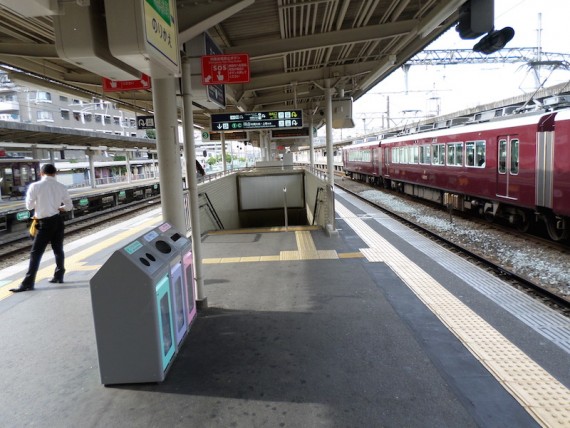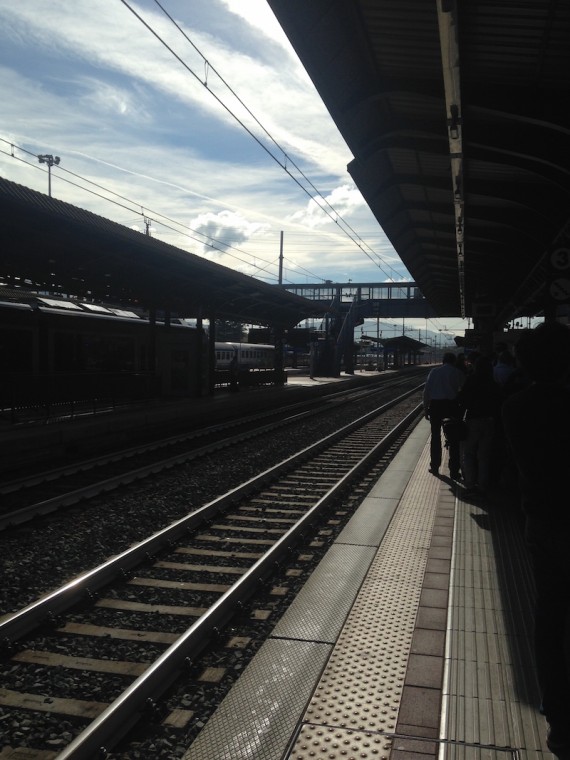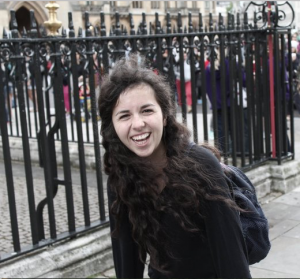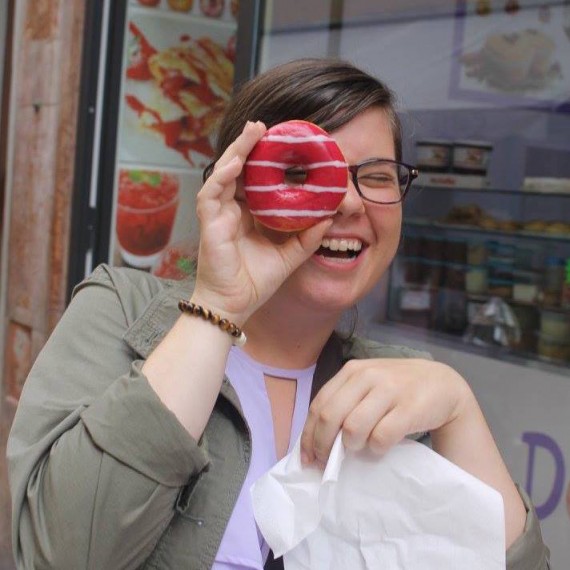
Week 1 Prompt: Trains
Prior to the advent of jet travel during the 1960s, and the subsequent deregulation of airline pricing schemes in the 1980s, trains were a common mode of transportation in the United States. According to the Bureau of Transportation Statistics (part of the U.S. Department of Transportation), air travel accounted for 576 million passenger miles in 2012, with intercity trains, including Amtrak, accounting for only about 7 million. By comparison, in 1960, the numbers were much closer: air travel saw 31 million passenger miles, with intercity trains at 17 million — a difference that conceals the greater distances typically traveled by aircraft. But America’s clear preference for aviation is by no means shared globally. In other parts of the world — India, China, and the EU especially — train travel is extremely common, even prevalent. This week, pay attention to trains. Does your current city connect to a rail system? Do people travel by train, subway, streetcar, or commuter service? Where is the nearest station? Take a picture of the station, then comment on the role of train travel in your local community.
Ryan Hildebrandt ’17, Psychology and Japanese
In Kyoto, like most major cities in Japan, trains form the basis of the public transportation system. Since Kyoto isn’t as much of a bustling metropolis as Tokyo or Osaka, there are two main subway lines, one running north-south and one running east-west. Off of these are several private rail lines, which run on a separate ticketing system from the city’s subways. These take you to the more distant regions of the city and into the sprawling suburbs, as well as into the mountains which also surround the city. The network of trains extends well beyond the limits of any individual city, also connecting major and minor cities with the world-famous Shinkansen bullet trains.

A train station in Kyoto, Japan.
Within the cities as well as in between them, trains provide a reliable and extremely affordable means of transport for everyday use. For me, the nearest station was Katsura-eki (Katsura station), about a 10-minute walk from my host family’s home. The station was a hub for taxi-cabs, bus routes, and both the Hankyu Kyoto and Arashiyama lines, one of which connects you to the city centers of both Osaka and Kyoto (about a 40 minute, $4 ride), and the other which takes you into the scenic mountains in the southwest of the city. Trains were integral to getting around during my time in Kyoto, and they are defintely one of my fondest memories of Japan.
Danielle Norgren ’18, French and International Relations
There are a lot of things in France that take a lot of time. Meals, for example. Dinner is a ritual that starts at 8pm, and can stretch until midnight. Walking through Dijon, one notices the café dwellers, relaxing with magazines or friends. One must signal a waiter for the check, as placing it on the table without request could be interpreted as a gesture of impatience. There is something about french culture that seems unrushed when compared to that of America. Americans strive for efficiency and productivity, every minute must be maximized. My high school host dad once summed this up in the following phrase: “The French work to live, the Americans live to work.”
Remarkably, however, this comparison does not hold when comparing systems of transportation. In America, particularly in cities, we struggle with congestion; commuting can consume a large majority of one’s time outside of work. In Dijon, however, the problem is virtually nonexistent. An extensive tram network connects the entirety of the city. If the tram does not get close enough to your destination, there are busses. Unlike in my hometown, Seattle, the predicted times of arrival are guaranteed down to the minute. To travel outside of Dijon, there is the TGV: “Le Train à Grande Vitesse.” The TGV is noted as “The world speed record holder, it zips from city to city at up to 322 kph (201 mph).” Thus, a trip to Paris takes only an hour and a half. While Dijon no longer has an airport, it can easily access the rest of the country, and world thanks to this system. France seems to have mastered efficient travel.

A train station in Dijon, France.
Friday, we had a group trip to the Hospices de Beaune. For under 10 euros, we were able to travel over 50 miles. By bus, we would have spent about 80 minutes simply traveling to our destination. By train, however, the trip was cut in half. Knowing french trains operate with ironclad precision, and knowing our group has a tendency to get lost, our professor asked us to arrive at the train station an hour early. In the station, a young man played piano as people rushed to their trains with briefcases. That morning, we were surrounded by businessmen and women, on their way to work in nearby towns. On our return trip, however, we found ourselves in a crowd of high school french students, on their way home for the weekend. They maneuvered the system with ease, reciting the bus schedule from memory. They laughed at our Americanness, noting how we tumbled with even the slightest jolt in the train. In high school, I flew over 70 times. I can make my way through airports at 4am, I know which airlines give the best inflight snacks, and I have the safety manual memorized. Yet, I have no idea where the local bus stop is. I envied these french students, and their ability to roam city to city with ease.
Mallory Keller ’17, Art History and Educational Studies
When preparing for my semester abroad, I thought that I would be traveling by train more than I have had before. I was surprised when I arrived in Florence and found out that Florence does not have a train system that resembles a subway. There is a regional train that few Italians take to Florence, like an hour ride from Pisa and Florence and back that runs several times a day, to commute to work, but I would not say that is common. From what I can determine, the train is used to travel to cities when you do not feel like driving or riding a bus. I have taken regional trains a few times to travel to cities around Italy that are too far to travel in one day on a bus, like Bologna, Venice, Naples and Rome. My trip to Bologna was quite pleasant as it was on a high speed train. The train took only 30 minutes while a bus would have taken close to 3 hours. My ears popped at times during the ride because of how fast the train was moving-300km/hr!

The regional train station near Mallory’s house in Florence, Italy.
Another high speed train company that I took to Naples and Venice was quite comfortable. The seats are larger than most seats I have experienced in the United States and they provided movies for the in car entertainment. The nearest station is 10 minutes from my home stay and it is primarily a regional train station for travel within Italy. If I want to ride a train outside of Italy, I would have to go to the large train station in the city, Santa Maria Nouvella Station, which I can get to by riding the regional train there or a 20 minute walk from my home. My overall opinion of the train system in Italy is that it makes travel fairly painless as long as the trains do not go on strike that day!
Zachary Weaver ’17
Trains are everywhere in the United Kingdom. They are one of the cheapest and most efficient ways of getting around the country, and almost every town or city has at least one train station. Cardiff is no different.
The main station lies in the center of the city, providing access to the heart of Cardiff and allows many people to live in the suburbs and take the train in to work. In fact, one of the reasons why there is comparatively little traffic in the center of the city is due to the presence of the trains! It is about a 20-minute city walk from the main residences where I live, but it is easy to find because the main line runs along the Cardiff University Campus and into the station. So, just follow that and it’s easy to find the station!
One of the benefits of having the station in the center of town is the access it provides during the busiest days of the year in Cardiff: When the Welsh National Rugby Team is playing a match in Principality Stadium (formerly Millennium Stadium). The train station is right across the street from the stadium, so people who are traveling from every corner of the United Kingdom have easy access to the almost 75,000 person stadium, where the atmosphere is often better than even American Football stadiums!

Likely after a match, people queuing outside of Cardiff Central Train Station. Photo from http://www.arrivatrainswales.co.uk/SpecialEvents/.
One of the remarkable aspects of trains in Cardiff is how efficient the authorities have made train travel. On match days, when the game is over and everyone is going home, it could be a chaotic mess of people trying to find the right train to get home. However, a quick walk near the station reveals that there are plans in place for these events. Signs are pointing out where to stand for the exact train that is needed. Going home to London? Stand in the big area for Londoners. Heading west to the relatively close by Swansea? That area is marked, too. Almost every city is represented on match days.
The extent and efficiency of trains is not reserved for cities, though. My grandparents live in rural northeast Wales, near the border with England. Even though their community is small, the nearest train station is a 15-minute car ride. Also, because they live in a valley, my grandparents actually live underneath a train viaduct allowing the train to efficiently cross the valley!
Sid Wadhera ’17, Economics and Political Science
Trains are deeply embedded in the ethos of the United Kingdom, and even more so in London. That is not an exaggeration; the Underground system has a long history as the worlds oldest rapid transit system. Some of the most recognizable images of World War II are tube stations used as air-raid shelters during the Battle of Britain. Yet, having spent time exploring the metro-rail systems in Seoul and New York City, I find that the Underground is not very much different than others in its category. The difference and significance of trains in the United Kingdom comes from the fact that they connect every part of the country so well. From Central London one can take a train south for a day trip to the coast; one can take a train north for a weekend in Scotland; one can take a train west to see the famed Welsh hills; perhaps most significantly of all, one can take a train to Paris, and from there to anywhere in Europe.
Ask the average Londoner what they think about trains, and you’re likely to get a confused stare. For most people they are just another part of daily life, but when the Tube workers go on strike it becomes hassle. This speaks to the old adage that goes something like “you don’t appreciate what you have until you lose it.” For Londoners, the Tube and trains have become so ingrained in their daily lives that they do not even notice…that is until the they stop running. Next week, I might make a trip to the London Museum of Transport to see if the train lovers over there have something more interesting to discuss.
The beauty of being in Central London for me is that I’m surrounded by Tube Stations. The three that properly triangulate my position are Russel Square, Holborn, and Tottenham Court Road. The interesting thing about these stations is that they put me on the map for three different tube lines: the Northern, Central, and Piccadilly lines. In essence, these are three major lines that direct me to any location I want in London. That is one significant advantage London has over New York: the lines are not so direct that you cannot connect between them.
Needless to say, I have gotten properly lost quite a few times on the Tube, and it has been an absolute pleasure. From the zone system of fees to oyster cards for payment, the Tube really has expanded my appreciation for the planning used in the implementation of this system and systems like it across the world. Now if only London’s streets were organized as nicely, but that’s a conversation for another day.
Allison Zengilowski ’17
Wollongong does have a rather convenient and user-friendly train system. The nearest train stop to my residence hall is about a ten minute walk. From there, it is about an hour and a half to two hour ride to get up to Sydney. The train runs rather far along the coast, making getting around to various locations in Australia sans car a feasible option. In terms of public transportation, Wollongong has both a bus and train system. Both are frequently used, but specifically in regards to trains, there are a great deal of commuters. I have been on the train both at very early points in the morning and very late in the evening, and there will be individuals coming or going to work, school, or for a quick, leisurely visit. The trains are well maintained, and there are even quiet cars if you would like to sleep, read, or get work done. Overall, it is an efficient and rather cheap way to travel around the New South Wales area.













